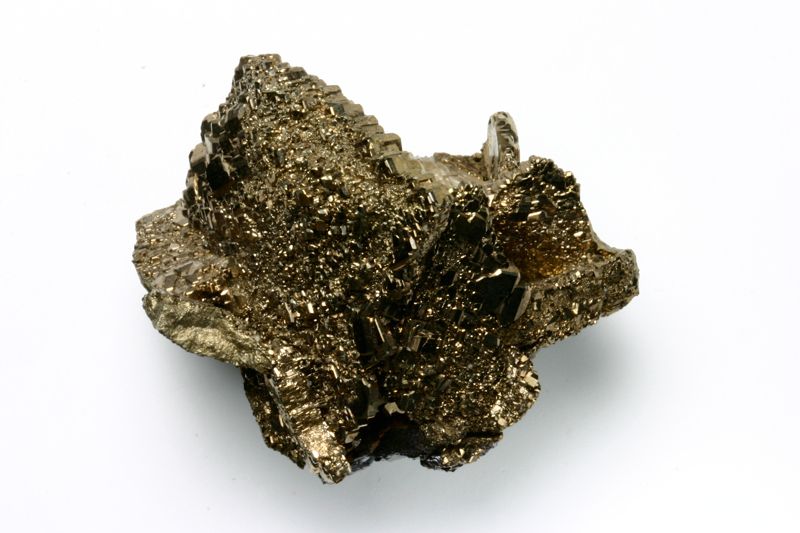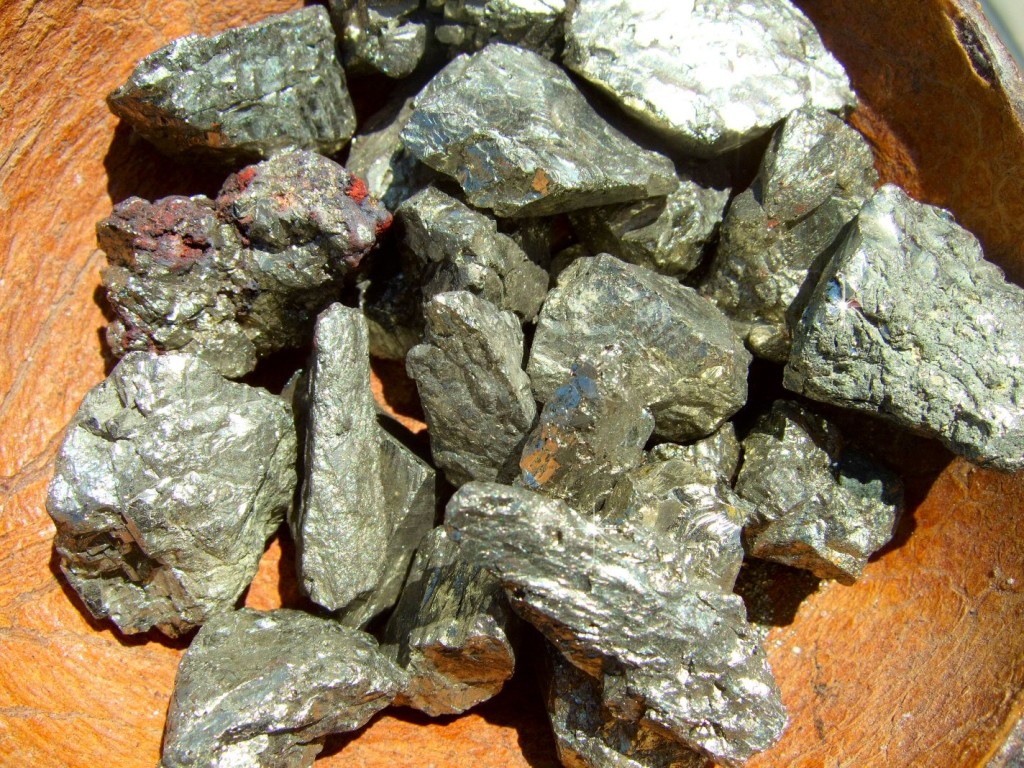The mineral pyrite, or iron pyrite, also known as fool's gold, is an iron sulfide with the formula FeS2. This mineral's metallic luster and pale brass-yellow hue give it a superficial resemblance to gold, hence the well-known nickname of fool's gold.

Pyrite is the most common of the sulfide minerals. The name pyrite is derived from the Greek πυρίτης (pyritēs), "of fire" or "in fire", in turn from πύρ (pyr), "fire". In ancient Roman times, this name was applied to several types of stone that would create sparks when struck against steel; Pliny the Elder described one of them as being brassy, almost certainly a reference to what we now call pyrite. By Georgius Agricola's time, the term had become a generic term for all of the sulfide minerals.

Pyrite is usually found associated with other sulfides or oxides in quartz veins, sedimentary rock, and metamorphic rock, as well as in coal beds and as a replacement mineral in fossils. Despite being nicknamed fool's gold, pyrite is sometimes found in association with small quantities of gold. Gold and arsenic occur as a coupled substitution in the pyrite structure.
Iron-pyrite FeS2 represents the prototype compound of the crystallographic pyrite structure. The structure is simple cubic and was among the first crystal structures solved by X-ray diffraction.

Chemical weathering transforms the crystals of pyrite into limonite by hydrating the molecules, but the external shape of the pyrite crystal remains. Because of its amorphous nature, and occurrence in hydrated areas limonite often presents as a clay or mudstone.

To log this Earthcache, it would be nice you took a photo with your GPS close to pyrite and limonite (it's optional) and answer following questions:
1. What color is the rock, could you mistake it for gold?
2. What shape are the pyrite crystals you can see?
3. Why does the top layer have a smooth surface?
4. What layers of minerals can you see on the shore, why are they located in this order?
5. Estimate the size of each layer.